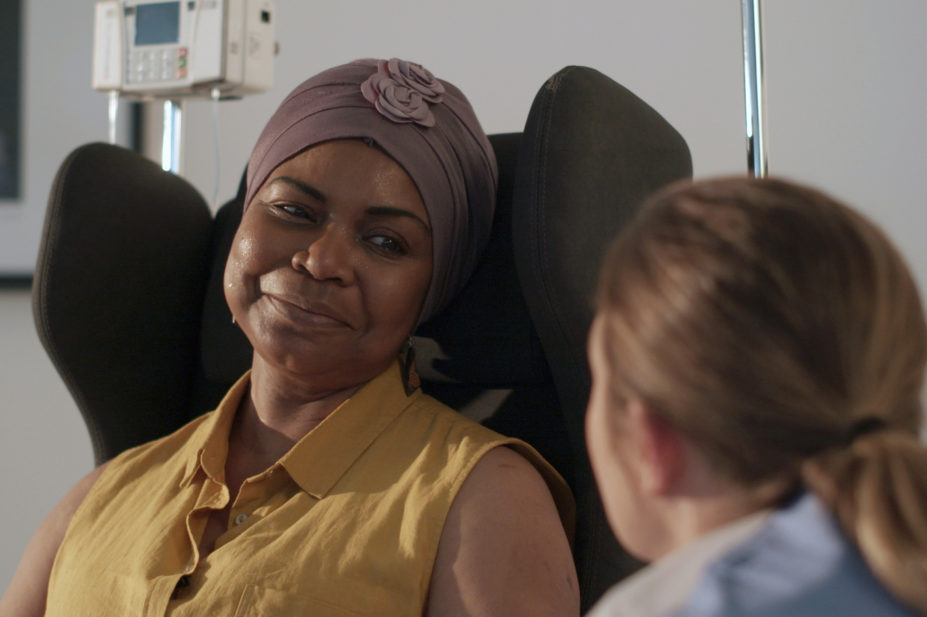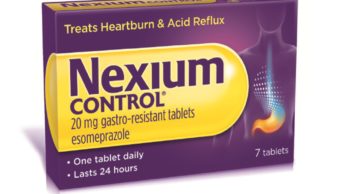
Introduction
Arguably, the COVID-19 pandemic is the greatest challenge in NHS history. While the NHS should be praised for its response to the pandemic, there have inevitably been consequences, the effects of which are now being seen. There have been reports in the press of delays to cancer care[1], which is supported by emerging research[2,3].
Analysis by Cancer Research UK (CRUK) revealed a 2.4-million-person shortfall in screening, referrals, and treatment over the 10-week period from the commencement of the first lockdown compared to normal levels of activity[4]. Of this shortfall, screening made up the majority, with around 2.1 million people left waiting for breast, bowel, or cervical screening. Urgent referrals had fallen by up to 75%, and chemotherapy fallen by 70%, leaving an approximate 600 people per week not receiving treatment. CRUK predicts that a significant backlog exists, with 12,750 fewer people receiving surgical intervention, 6,000 fewer for chemotherapy, and 2,800 fewer for radiotherapy since the start of the first lockdown[4].
From the NHS Five Year Forward View, published in 2015, the roll-out of Integrated Care Systems has seen impressive progress. Notwithstanding COVID-19, evolution in the NHS will continue with advancing diagnostic and treatment options, and the commissioning of new models of care. From April 2021, NHS commissioners will make shared decisions with providers on population health, service redesign, and long-term plan implementation. They will have to consider how to approach securing the future of sustainable cancer care services.
The second wave of the pandemic forced the NHS to contend with another significant uplift in serious COVID-19 cases as well as managing the reported growing backlog of both undiagnosed and existing cancer patients.
In response to this, major UK cancer charities have published a 12-point plan for the restoration, recovery, and transformation of cancer services and called for the government to support the NHS in setting out a clear plan[4].
A round table, organised by BD in line with the ‘First Do No Harm’ initiatives[5], discussed low effort/high return practices that could be replicated elsewhere to reduce the backlog caused by the pandemic. This paper outlines the discussions and recommendations put forward by the group.
Fear is a factor for cancer patients
As cancer treatment leaves patients immunocompromised, they represent a group of patients particularly at-risk from COVID-19. To ensure safe treatment delivery, cancer services should:
- Swab patients and staff on entry;
- Use outpatient clinics for non-chemotherapy services;
- Increase employment of home healthcare services;
- Move treatment clinics outside of main hospital;
- Switch patients from IV to sub-cutaneous/oral formulations when possible.
Whilst such steps have provided reassurance for many patients, fear of infection is a barrier that may prevent others from attending hospitals for consultations, routine treatment, or post chemotherapy.
Capacity is a challenge
During the first wave, the NHS stopped many non-essential services in order to manage the influx of COVID-19 cases while maintaining essential planned and emergency care. After the wave peaked, most services were reinstated with the intention to maintain this during subsequent waves. In practice, this means that during a capacity crunch caused by high numbers of COVID-19 cases, hospital trusts will also be expected to provide their usual service levels.
Naturally, logistical challenges may arise as a result. Everything from maintaining reliable and efficient supply chains, bottlenecks in processes such as medicine preparation and delivery, and maintaining an error free end-to-end process may be impaired.
The NHS can look to independent providers
Independent providers have the capacity and skills to deliver routine cancer services and help clear the diagnostic backlog[6]. With an influx of diagnosed cases, a corresponding influx of new cases for treatment can be expected, but collaboration between the NHS and independent providers can match the capacity needs to available services. Providing healthcare at home can reduce the fear of hospital derived infection and the risk of infection to immunocompromised patients.
Delays in cancer diagnosis are a problem for many
Whilst many oncology services are maintaining treatment delivery close to pre-pandemic levels, the halting of many screening services may be causing a reduction in diagnosis of the earliest stages of detectable disease.
There has been some observation that the number of patients presenting with metastatic spinal cord compression has increased since the first wave, so that many are now presenting with more advanced disease. The backlog of screening cases may be a consequence of people choosing to stay away from hospitals, either through fear of infection or to avoid putting extra burden on the system.
It should be stressed to people that if they are feeling unwell, that they should seek medical advice, and to present for screening if available.
Systems can be employed to improve efficiency
The use of virtual methods has been accelerated as a consequence of the pandemic and has been one of the success stories of 2020. Telephone consultations are easy to implement but rely on patients accurately communicating their health state, meaning that face-to-face and video consultations are often necessary.
Inevitably there will be problems using a virtual approach as patients may not have access to or be unable to use the required technology, so a ‘one size fits all’ approach will clearly not work. That said, many patients are able to use virtual methods, and some may have access to wearable technology to capture heart rate, blood pressure, sleep patterns etc, that could be utilised by the HCP.
Systems need to talk to each other
Within the NHS there are complex systems employed for specific purposes, with a variety of vendors providing multiple options. This variety raised issues during the initial response to the pandemic when problems in integrating NHS and independent systems proved problematic. While having all healthcare providers using the same systems is unrealistic, the solution could be a common interface that would allow the sharing of data in a robust and reliable manner.
Staffing levels are a problem in some roles
Specialist oncology nursing roles are currently difficult to fill. District General Hospitals appear to struggle more than large specialists Trusts in attracting applicants. Training of existing staff is one solution, though clinician resources are often at a premium. Providers need to look at different skill sets, e.g. pharmacists, and employ them to free up specialist nurses and clinicians to focus on where the greatest need is.
Technology can help
The UK government has committed to support the implementation of electronic patient records and digital prescribing[7]. There are clear efficiency gains to be made in adopting technological solutions with funding available to Trusts to drive this initiative.
Opportunities for the NHS in managing cancer services during COVID-19
Based on real-life experience and the discussion held, the recommendations from this roundtable include:
1. Reducing time to diagnosis:
- Explore the use of alternative venues to deliver services in the community;
- Improve working with community teams to maximise patient flow and time. For example, combining doctor and pharmacy clinics so patient can see everyone in the same appointment.
2. Expand capability to deliver virtual consultations
- Initial face-to-face consultation to cover the technical capabilities or the best way to maintain contact;
- Supplying patients with phone/laptops bought cheaply en masse or explore local facilities;
- Provide advice/training as needed.
3. Technology used with patients
- Harness the use of wearable technologies if data can be captured and shared easily;
- Offer training to those HCPs reluctant to embrace recent technological advances.
4. Moving services away from being consultant-only led service
- Use independent prescribers to greater effect;
- Consider redesigning services as nurse/pharmacy led to free clinician capacity.
5. Measuring outcomes and performance
- Use centralised administrative functions to develop and maintain local outcome measures in agreement with clinical leads.
6. Ongoing training and recruitment
- Commit to an ongoing training programme for training of oncology specialist nurses and clinicians;
- Use virtual training methods to record and deliver training.
7. Enhance workflow efficiency
- Review workflows to improve patient throughput, minimise visits to hospital, reduce waiting times, and improve the processes such as blood testing.
8. Technology available within the Trust
- The NHS should engage with the developers of software systems to agree and deliver a standard/universal interface (middleware) with appropriate testing and validation.
9. Use of alternative providers and homecare services
- Identify local opportunities to work with independent providers as partners, be conscious of the business needs of these providers;
- Work with independent providers to identify anticipated increases in demand.
While the NHS has done tremendous work in adverse conditions, more needs to be done by bold thinking and collaborative working to achieve sustainable efficiency to clear the patient backlog – not only for today, but for future delivery of cancer care.
Declarations
The authors declare no conflict of interest in respects to this article and received no financial support for their part in the writing or data acquisition of the article. The round table discussion was arranged by BD and all views expressed within the document are those of the individual panel members and not those of their organisations/places of work. Writing assistance was provided by Triducive Ltd.
Acknowledgements
The authors wish to thank Nicola Jones, Lead Nurse Consultant at University Hospital Birmingham NHS Foundation Trust, for her contributions to the data acquisition stage of this manuscript
Author contributions
All authors contributed equally to the data acquisition, writing and direction of the final document.
- 1Lamb C. The silent cost of the coronavirus: NHS cancer delays, cancelled operations and a bleak winter ahead. The Times. 2020.https://www.thetimes.co.uk/article/the-silent-cost-of-the-coronavirus-nhs-cancer-delays-cancelled-operations-and-a-bleak-winter-ahead-jnjkfvfbt (accessed Oct 2021).
- 2Maringe C, Spicer J, Morris M, et al. The impact of the COVID-19 pandemic on cancer deaths due to delays in diagnosis in England, UK: a national, population-based, modelling study. The Lancet Oncology. 2020;21:1023–34. doi:10.1016/s1470-2045(20)30388-0
- 3Faculty of Clinical Oncology position on COVID-19. The Royal College of Radiologists. 2020.https://www.rcr.ac.uk/posts/faculty-clinical-oncology-position-covid-19-26-october-2020 (accessed Oct 2021).
- 4Roberts K. What’s happened to cancer services during the COVID-19 pandemic? Cancer Research UK. 2020.https://scienceblog.cancerresearchuk.org/2020/09/11/whats-happened-to-cancer-services-during-the-covid-19-pandemic/ (accessed Oct 2021).
- 5First Do No Harm. Independent Medicines and Medical Devices Safety Review. . 2020.https://www.immdsreview.org.uk/Report.html (accessed Oct 2021).
- 6Covid-19 and cancer: a 12-point plan for restoration, recovery, and transformation of cancer services. . Cancer Research UK. 2020.https://www.cancerresearchuk.org/sites/default/files/covid_and_cancer_12_point_plan_ocv_-_final.pdf (accessed Oct 2021).
- 7£16 million to introduce digital prescribing in hospitals. Department of Health and Social Care. 2020.https://www.gov.uk/government/news/16-million-to-introduce-digital-prescribing-in-hospitals (accessed Oct 2021).


